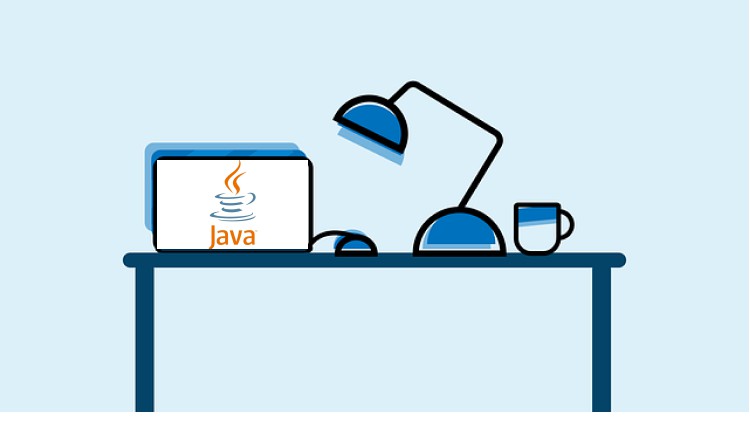OCP Java SE 8 Programmer II Exam Simulator 1Z0-809
Practice 1Z0-809 questions using this simulator and pass your real exam confidently

What you will learn
OCP Java SE 8 Programmer II Exam Simulator 1Z0-809
Confidently appear in Oracle Certified Professional Java SE 8 II (1Z0-809) exam
Conceptual understanding of Advance Java SE 8 concepts.
Time management for Oracle Certified Professional Java SE 8 II (1Z0-809) exam
Why take this course?
Format: Multiple Choice
Duration: 150 minutes
Exam Price: $245
Number of Questions: 85
Passing Score: 65%
Validation: This exam is validated against Java SE 8.
Review exam topics
Java Class Design
Implement encapsulation
Implement inheritance including visibility modifiers and composition
Implement polymorphism
Override hashCode, equals, and toString methods from Object class
Create and use singleton classes and immutable classes
Develop code that uses static keyword on initialize blocks, variables, methods, and classes
Advanced Java Class Design
Develop code that uses abstract classes and methods
Develop code that uses the final keyword
Create inner classes including static inner class, local class, nested class, and anonymous inner class
Use enumerated types including methods, and constructors in an enum type
Develop code that declares, implements and/or extends interfaces and use the @Override annotation.
Create and use Lambda expressions
Generics and Collections
Create and use a generic class
Create and use ArrayList, TreeSet, TreeMap, and ArrayDeque objects
Use java.util.Comparator and java.lang.Comparable interfaces
Collections Streams and Filters
Iterate using forEach methods of Streams and List
Describe Stream interface and Stream pipeline
Filter a collection by using lambda expressions
Use method references with Streams
Lambda Built-in Functional Interfaces
Use the built-in interfaces included in the java.util.function package such as Predicate, Consumer, Function, and Supplier
Develop code that uses primitive versions of functional interfaces
Develop code that uses binary versions of functional interfaces
Develop code that uses the UnaryOperator interface
Java Stream API
Develop code to extract data from an object using peek() and map() methods including primitive versions of the map() method
Search for data by using search methods of the Stream classes including findFirst, findAny, anyMatch, allMatch, noneMatch
Develop code that uses the Optional class
Develop code that uses Stream data methods and calculation methods
Sort a collection using Stream API
Save results to a collection using the collect method and group/partition data using the Collectors class
Use flatMap() methods in the Stream API
Exceptions and Assertions
Use try-catch and throw statements
Use catch, multi-catch, and finally clauses
Use Autoclose resources with a try-with-resources statement
Create custom exceptions and Auto-closeable resources
Test invariants by using assertions
Use Java SE 8 Date/Time API
Create and manage date-based and time-based events including a combination of date and time into a single object using LocalDate, LocalTime, LocalDateTime, Instant, Period, and Duration
Work with dates and times across timezones and manage changes resulting from daylight savings including Format date and times values
Define and create and manage date-based and time-based events using Instant, Period, Duration, and TemporalUnit
Java I/O Fundamentals
Read and write data from the console
Use BufferedReader, BufferedWriter, File, FileReader, FileWriter, FileInputStream, FileOutputStream, ObjectOutputStream, ObjectInputStream, and PrintWriter in the javadotio package.
Java File I/O (NIO.2)
Use Path interface to operate on file and directory paths
Use Files class to check, read, delete, copy, move, manage metadata of a file or directory
Use Stream API with NIO.2
Java Concurrency
Create worker threads using Runnable, Callable and use an ExecutorService to concurrently execute tasks
Identify potential threading problems among deadlock, starvation, livelock, and race conditions
Use synchronized keyword and java.util.concurrent.atomic package to control the order of thread execution
Use java.util.concurrent collections and classes including CyclicBarrier and CopyOnWriteArrayList
Use parallel Fork/Join Framework
Use parallel Streams including reduction, decomposition, merging processes, pipelines and performance.
Building Database Applications with JDBC
Describe the interfaces that make up the core of the JDBC API including the Driver, Connection, Statement, and ResultSet interfaces and their relationship to provider implementations
Identify the components required to connect to a database using the DriverManager class including the JDBC URL
Submit queries and read results from the database including creating statements, returning result sets, iterating through the results, and properly closing result sets, statements, and connections
Localization
Read and set the locale by using the Locale object
Create and read a Properties file
Build a resource bundle for each locale and load a resource bundle in an application
Assume the following:
Missing package and import statements: If sample code do not include package or import statements, and the question does not explicitly refer to these missing statements, then assume that all sample code is in the same package, or import statements exist to support them.
No file or directory path names for classes: If a question does not state the file names or directory locations of classes, then assume one of the following, whichever will enable the code to compile and run:
All classes are in one file
Each class is contained in a separate file, and all files are in one directory
Unintended line breaks: Sample code might have unintended line breaks. If you see a line of code that looks like it has wrapped, and this creates a situation where the wrapping is significant (for example, a quoted String literal has wrapped), assume that the wrapping is an extension of the same line, and the line does not contain a hard carriage return that would cause a compilation failure.
Code fragments: A code fragment is a small section of source code that is presented without its context. Assume that all necessary supporting code exists and that the supporting environment fully supports the correct compilation and execution of the code shown and its omitted environment.
Descriptive comments: Take descriptive comments, such as "setter and getters go here," at face value. Assume that correct code exists, compiles, and runs successfully to create the described effect.